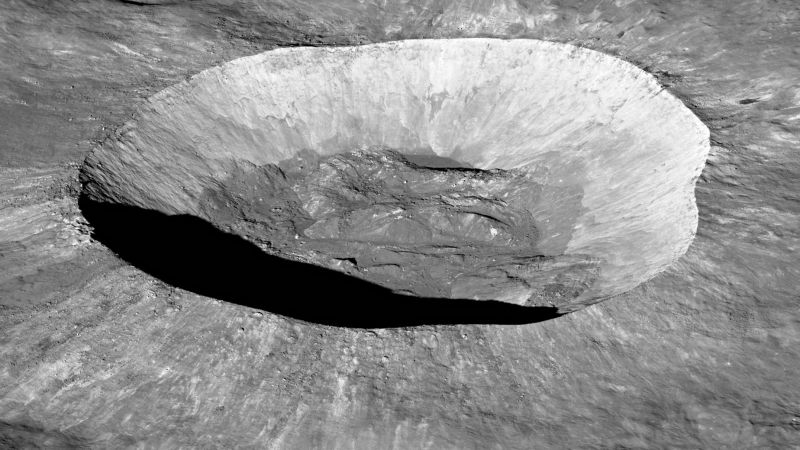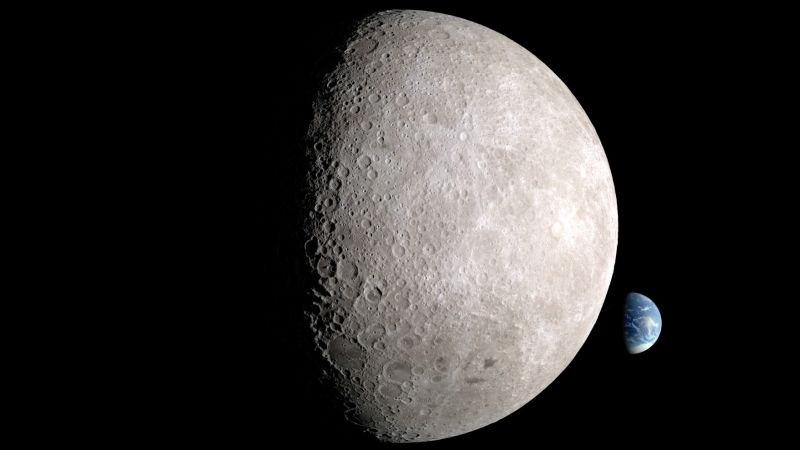 Source: See here
Source: See hereIn The News:
What's on the far side of the moon? Here's why scientists want to find out | CNN
When the Chang'e-4 mission landed in the Von Karman crater on January 3, 2019, China became the first and only country to land on the far side of the moon — the side that always faces away from Earth.
Now, China is sending another mission to the far side, and this time, its goal is to return the first samples of the moon's "hidden side" to Earth.
The Chang'e-6 mission, launched Friday , is set to spend 53 days exploring the South Pole-Aitken basin to study its geology and topography as well as collect samples from different spots across the crater.
The South Pole-Aitken basin is believed to be the largest and oldest crater on the moon , spanning nearly a quarter of the lunar surface with a diameter measuring roughly 1,550 miles (2,500 kilometers). The impact crater is more than 5 miles (8 kilometers) deep.

An unusual asteroid traveling near Earth is thought to be a chunk of the moon , but exactly how it ended up zooming through the solar system has remained a mystery. Now, researchers say they've made a key connection in this cosmic puzzle.
The space rock, known as 2016 HO3, is a rare quasi-satellite — a type of near-Earth asteroid that orbits the sun but sticks close to our planet.
Astronomers first discovered it in 2016 using the Pan-STARRS telescope, or Panoramic Survey Telescope and Rapid Response System, in Hawaii. Scientists call the asteroid Kamo'oalewa, a name derived from a Hawaiian creation chant that alludes to an offspring traveling on its own.
While most near-Earth asteroids originate from the main asteroid belt — between the orbits of Mars and Jupiter — new research has revealed that Kamo'oalewa most likely came from the Giordano Bruno crater on the moon's far side, or the side that faces away from Earth, according to a study published April 19 in the journal Nature Astronomy .
Measuring between 150 and 190 feet (46 and 58 meters) in diameter, Kamo'oalewa is about half the size of the London Eye Ferris wheel. During orbit, it comes within 9 million miles (14.5 million kilometers) of Earth, making it a potentially hazardous asteroid astronomers keep track of and learn more about in case it ever strays too close to our planet.
Previous research focused on the asteroid's reflectivity, which unlike typical near-Earth asteroids is similar to lunar materials, as well as the space rock's low orbital velocity in relation to Earth, a quality that suggests it came from relatively nearby.
For the new study, astronomers used simulations to narrow down which of the moon's thousands of craters could have been the asteroid's point of origin.
Based on the modeling, the team determined that the impactor that potentially created the asteroid would need to be at least 0.6 miles (1 kilometer) in diameter to dislodge such a massive fragment. When the object hit the moon, it likely dug Kamo'oalewa out from beneath the lunar surface, sending the space rock flying and leaving a crater larger than 6 to 12 miles (10 to nearly 20 kilometers) in diameter.
No comments:
Post a Comment